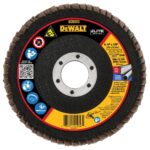Diagnosing car problems can often feel like navigating a complex maze. Modern vehicles are intricate systems, and pinpointing the root cause of an issue requires precision and the right tools. For automotive professionals and serious DIYers, the oscilloscope has emerged as an indispensable instrument for in-depth diagnostics. If you’re looking to elevate your diagnostic capabilities, understanding the power of an oscilloscope is crucial. Welcome to your “tool topia” for automotive diagnostics – let’s explore why an oscilloscope is an essential addition to your toolkit.
Why an Oscilloscope is a Game Changer for Car Diagnostics
Gone are the days of relying solely on OBD-II scanners for comprehensive car troubleshooting. While scanners provide fault codes, they often lack the granular detail needed to truly understand the electrical signals within a vehicle. This is where the oscilloscope shines. An automotive oscilloscope, unlike a multimeter or scan tool, visualizes electrical signals as waveforms, painting a dynamic picture of what’s happening in circuits over time.
Think of it like this: a scan tool tells you there’s a problem (e.g., a misfire), but an oscilloscope shows you why it’s happening. Is it a faulty ignition coil? A sensor sending erratic signals? A communication issue within the car’s network? The oscilloscope allows you to see the voltage fluctuations, signal timing, and patterns that reveal the underlying causes of malfunctions with unmatched clarity.
This visual representation is invaluable for diagnosing a wide range of automotive problems, including:
- Sensor Testing: Verifying the functionality of oxygen sensors, crankshaft position sensors, camshaft position sensors, MAF sensors, and more by observing their signal output.
- Ignition System Analysis: Examining ignition waveforms to identify issues with coils, spark plugs, and wiring, crucial for diagnosing misfires and performance problems.
- Fuel Injection Diagnostics: Analyzing injector pulse width and timing to troubleshoot fuel delivery issues affecting engine performance and emissions.
- Communication Networks (CAN Bus, etc.): Decoding and analyzing data signals on vehicle networks to identify communication faults between modules.
- Charging and Starting System Analysis: Evaluating voltage and current waveforms to diagnose alternator, starter, and battery problems.
Key Features to Seek in an Oscilloscope for Cars: Your Tool Topia Checklist
When choosing an oscilloscope for automotive use, certain features are paramount to ensure it meets the demands of car diagnostics. Consider these aspects when building your “tool topia”:
- Channels: Opt for at least a 2-channel oscilloscope, with 4-channel models offering even greater versatility for comparing signals simultaneously across different components.
- Bandwidth: A bandwidth of 20 MHz or higher is generally recommended for automotive applications to accurately capture the fast signals present in modern vehicle systems.
- Sampling Rate: A high sampling rate (e.g., 100 MS/s or more) ensures detailed waveform capture, preventing aliasing and providing accurate signal representation.
- Voltage Ranges: The oscilloscope should be capable of measuring a wide range of voltages, from millivolts for sensor signals to higher voltages in ignition systems.
- Automotive-Specific Features: Look for oscilloscopes designed with automotive use in mind. These often include pre-set automotive tests, specialized probes and attenuators, and software with automotive diagnostic features.
- Ease of Use: A user-friendly interface and intuitive controls are essential, especially for those new to oscilloscopes.
- Portability: A portable oscilloscope is advantageous for working in various locations around a vehicle.
Mastering Car Diagnostics: Oscilloscope Techniques
Using an oscilloscope effectively involves understanding waveform interpretation and applying specific testing techniques. Here are some fundamental approaches:
- Voltage Drop Testing: While traditionally done with a multimeter, an oscilloscope can visualize voltage drops dynamically, revealing intermittent connection issues or changes under load.
- Signal Pattern Analysis: Learning to recognize normal and abnormal waveforms for various sensors and actuators is key. Deviations from expected patterns indicate faults.
- Relative Compression Testing: By analyzing starter current waveforms, an oscilloscope can help assess cylinder compression balance without dismantling the engine.
- CAN Bus Signal Analysis: Oscilloscopes equipped with CAN bus decoding capabilities allow technicians to troubleshoot communication problems by examining data packet waveforms.
Building Your Automotive Diagnostic “Tool Topia”
Investing in an oscilloscope is an investment in your diagnostic prowess. It empowers you to go beyond basic code reading and delve into the intricate electrical workings of vehicles. When selecting your oscilloscope, consider reputable brands known for quality and reliability in the automotive diagnostic field. Brands like [mention some reputable brands if known, or leave generic like “leading brands in automotive diagnostics”] offer oscilloscopes tailored for automotive technicians.
Remember, an oscilloscope is not a replacement for other diagnostic tools, but a powerful complement. Combined with a good scan tool, diagnostic software, and your expertise, an oscilloscope becomes the cornerstone of a truly comprehensive automotive diagnostic “tool topia”. Embrace the power of waveform analysis, and unlock a new level of precision in your car repair endeavors.

